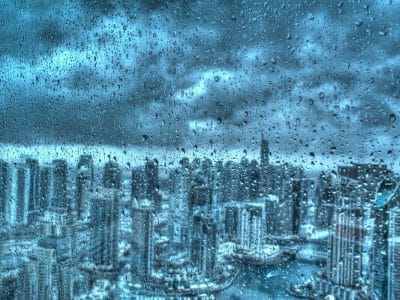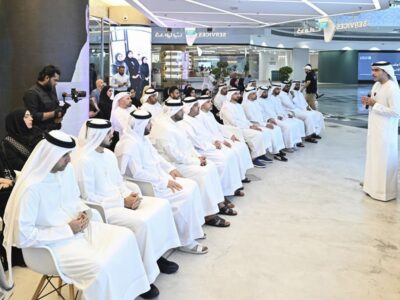The state of play in the region’s most dynamic upstream market.
The United Arab Emirates derives the overwhelming majority of its State revenues from the rich oil and gas reserves which sit beneath the Emirates. Of course, strictly speaking, the lion’s share of that is concentrated in Abu Dhabi, the capital city and production hub.
However, a good number of the support and service industries that dot the Fujairah and Sharjah coasts, and the massive enterprises nestled into the booming Freezones of Dubai can attribute their success to those reserves too.
The UAE has managed to deliver business and enterprise throughout the country from that oil and gas base in a much more successful way than many of its neighbours. Whilst chinks have appeared in the armour in 2009, the successful diversification programmes it has embarked upon, including aluminium manufacture, petrochemical production and its hard-won status as a genuine logistical hub for the region, all remain solid and viable business ventures, and will remain so for decades more.
Overview
Oil and gas production has been the mainstay of the economy in the UAE and will remain a major revenue earner long into the future. Proven recoverable oil reserves are estimated in the 97 to 98 billion barrels range, depending on where you look. This equates to a phenomenal 9.5% of the global crude oil proven reserves.
As for natural gas, the proven recoverable reserves are estimated at around 214 trillion cubic feet (Tcf). The small Gulf nation holds the fourth largest proven natural gas reserves in the Middle East after Iran, Qatar, and Saudi Arabia. As with oil, the largest reserves of 198.5 Tcf are located in Abu Dhabi. UAE government sources estimate that such reserves, at current production will, excluding any new discoveries, last for over 150 years.
The UAE ’s oil production is limited by quotas agreed within the framework of OPEC to 2.25 million barrels per day (mbd). Production capacity, however, is slated to rise to approximately 5 million bpd by 2014, though the impact of current OPEC quotas and sluggish global demand recovery may see those plans strategically slowed.
Japan is a major trade partner for the UAE, and in 2008 Japan imported 369.2 million barrels of crude oil from the UAE, covering 25.1 per cent of Japan’s total crude oil imports.
The big question of course is what projects and developments are in the pipeline over the course of the next decade? Information from a variety of government sources has been compiled and digested in the following snapshots. For detailed coverage and analysis of the UAE’s major oil and gas projects and plans, and a special report on the ADNOC group of companies, please viist our sister website
ArabianOilandGas.com
.
$43 billion portfolio
Turning to the future, upstream oil and gas entities in the UAE continue to identify new projects aimed at boosting the nation’s crude oil production capacity to nearly 4 million barrels per day by 2020, which would amount to an additional increase of approximately 40 percent over current production levels.
Reaching this ambitious target will represent a massive undertaking of resources and investment, particularly in light of persistent manpower and materials shortages that have afflicted the global oil and gas sector since 2003. The UAE has invested roughly $7 billion in upstream production infrastructure since 2004 and anticipates investing some $43 billion more in the coming years. At the same time, the UAE will invest more than $6 billion to expand its domestic refining capacity, which will significantly expand its ability to export refined products from the region.
Pressure point
Much of the UAE’s current crude oil production is made possible by the reinjection of natural gas to boost pressure in the nation’s major oil reservoirs. Without this massive programme, the UAE’s crude production would stagnate and decline. The UAE is testing carbon capture and sequestration technologies to replace the reinjection of natural gas. This would enhance exports of natural gas, create more flexibility in oil production and provide global environmental benefits.
Boosting exports
In 2005 the UAE became the one of the first major oil-producing countries to ratify the Kyoto Protocol to the UN Convention on Climate Change. As part of its energy diversification strategy, the UAE is working in a variety of ways to reduce its carbon footprint, meet its own domestic energy needs and expand exports:
To reduce hydrocarbon consumption, and pave the way for a new generation of planned communities, Abu Dhabi is investing more than $20 billion in the famous Masdar programme (See our sister website
www.Utilities-ME.com
for more on Masdar). Additionally, the UAE is a pioneer in the region’s peaceful nuclear energy programme. Tremendous population growth as well as intense water desalination requirements require a huge electricity supply, and that demand is only set to grow. This reduces domestic demand for natural gas and the need for oil-burning power plants used to meet peak demand during hot summer months.
Regional first
In the first major cross-border energy deal between Gulf countries, the UAE is importing natural gas by pipeline from Qatar. The gas supports domestic electricity demands and frees Abu Dhabi’s natural gas supply for crude oil recovery. The project began delivering gas to power companies in the second quarter of 2007.
Among other energy efficiency drives, is Dubai’s development of the region’s first light rail system, the Dubai Metro. Phase one launched this year, with a more comprehensive network going live in 2010.
Working with global partners
The UAE has a history of welcoming private-sector investment into its upstream oil and gas exploration and production sector. Abu Dhabi was the only OPEC member not to nationalise the holdings of foreign investors during the wave of nationalisation that swept the global oil and gas industry in the mid-1970s, and it continues to benefit from high levels of private-sector investment.
Today international oil companies from the United States, Japan, France, Britain and other countries continue to hold combined equity stakes of between 40 and 100 percent in Abu Dhabi’s vast oil concessions.
Occidental Petroleum of the US and Total of France each has a 24.5 percent equity stake in the Dolphin Energy gas pipeline project. ExxonMobil recently won a tender for the redevelopment of the Upper Zakum field, which will ultimately increase oil production by more than 220 000 barrels per day.
Last year, US supermajor ConocoPhillips won a multi-billion dollar open tendering bout for the development of massive sulphur-rich gas reserves in Abu Dhabi, further limiting the amount of crude oil that would need to be burned domestically for internal electricity generation.
• Proven recoverable oil reserves are estimated in the 97 to 98 billion barrels range
• The proven recoverable gas reserves are estimated at around 214 trillion cubic feet (Tcf).
• In 2008 Japan imported 369.2 million barrels of crude oil from the UAE
• Oil production capacity is slated to rise to approximately 5 million bpd by 2014







